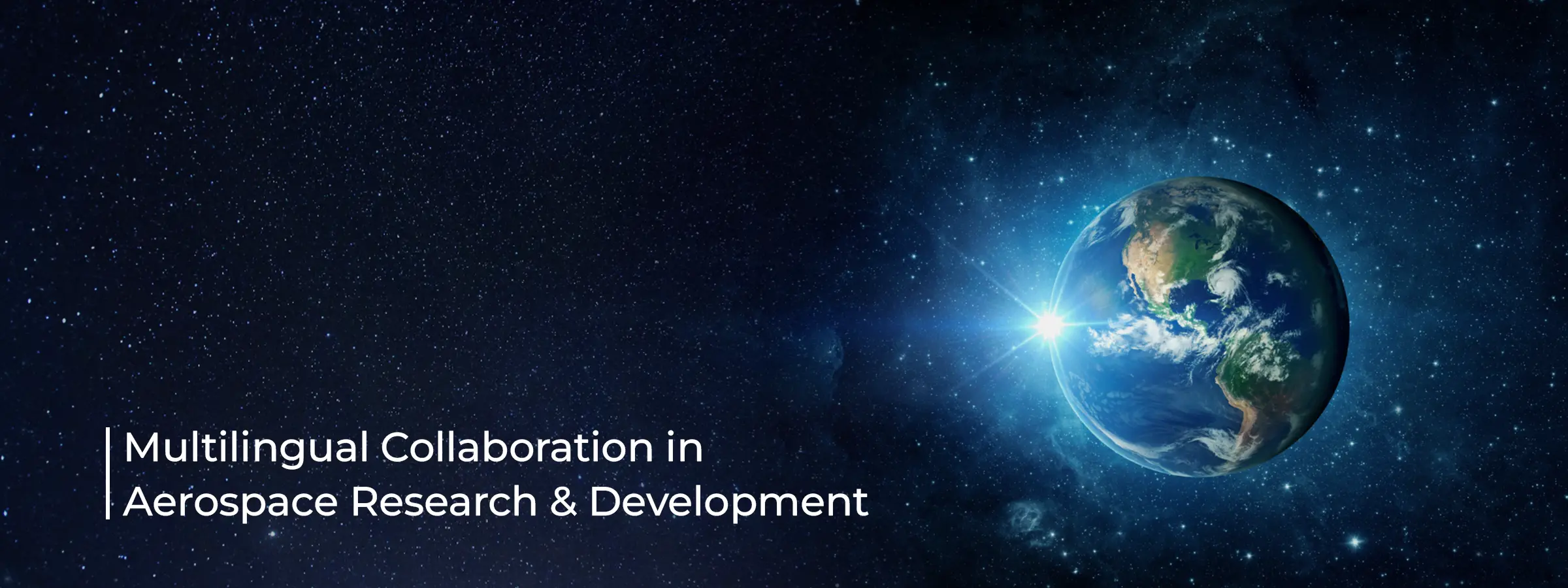
In the realm of aerospace and defence, innovation is not just a driver of progress - it's the very fuel that propels the industry into the future. However, in a field where collaboration crosses borders and cultures, language barriers can act as formidable obstacles to the flow of ideas and information. This is where the power of multilingual cooperation comes into play, transforming potential barriers into innovation bridges. This blog post highlights the successful multinational R & D projects within the aerospace and defence industry, facilitated by practical multilingual communication tools, and showcases their profound impact on innovation and technological advancement.
The aerospace sector's R & D endeavours are often the result of international collaborations, drawing on the strengths and specialities of partners from around the globe. Multilingual communication tools - from real-time translation services to culturally adapted collaborative platforms - enable these diverse teams to work together seamlessly. Ensuring that language differences do not hinder communication, these tools help maintain a clear, open channel for exchanging ideas, feedback, and innovations.
One of the most iconic examples of multilingual collaboration in action is the International Space Station (ISS). This monumental project, involving multiple countries such as the United States, Russia, Japan, Canada, and members of the European Space Agency, showcases how multilingual coordination and communication have been pivotal in its success. The ISS relies on a complex web of multilingual tools and processes, from training astronauts to communicate in multiple languages to utilising translation and interpretation services for technical documentation and cross-cultural communication. The result is a testament to human ingenuity and the potential of collaborative innovation when language barriers are effectively bridged.
Technology advancements have provided the aerospace industry with various tools for multilingual collaboration. Cloud-based translation platforms, AI-driven interpreters, and collaborative software with built-in language support enable teams to work together despite speaking different languages in real time. These tools enhance efficiency and ensure that the nuance and precision required in aerospace R & D are preserved across linguistic divides.
The strategic application of multilingual communication tools in aerospace R&D has led to remarkable innovation and technological advancement outcomes. Here are a few areas where the impact is most pronounced:
Effective multilingual collaboration enables faster idea iteration and refinement, significantly accelerating development cycles. This speed is crucial in an industry where the timely introduction of innovations can provide a competitive edge and respond to emerging global challenges.
The aerospace industry is governed by stringent safety standards that require international cooperation to develop and implement. Multilingual collaboration facilitates the global exchange of safety practices, research findings, and regulatory developments, contributing to higher safety standards worldwide.
Bringing together R & D teams from diverse linguistic and cultural backgrounds fosters a melting pot of ideas, perspectives, and approaches. This diversity is a wellspring of creativity, driving the development of groundbreaking technologies and solutions that might not emerge within a more homogeneous group.
The stories of multinational R & D projects in the aerospace and defence industry underscore the critical role of multilingual communication in fostering innovation. The sector can overcome linguistic barriers by leveraging advanced multilingual tools and services, enhancing collaboration, and driving technological progress. As we look to the skies and beyond, the future of aerospace innovation is unequivocally linked to our ability to communicate and collaborate across languages. Embracing and investing in multilingual multimedia services is not merely a strategy for effective communication; it's a catalyst for innovation and a bridge to a future where the possibilities are as boundless as the universe.
© 2024 WHITE GLOBE GROUP PVT LTD